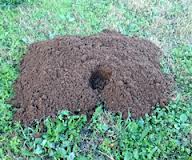Pollinators play a pivotal role in our ecosystem, ensuring the reproduction of many flowering plants and the production of the fruits and vegetables we consume. However, the numbers of bees, butterflies, and other pollinating insects have been dwindling over the years. By creating a pollinator-friendly garden, not only are you adding beauty to your space, but you’re also contributing to the survival and prosperity of these vital creatures.
Why are Pollinators Important?
Pollinators are responsible for transferring pollen from one flower to another, facilitating fertilization and ensuring the production of seeds. This process is vital for:
Biodiversity: A large variety of plants rely on pollinators for reproduction.
Food Production: About 75% of global food crops benefit from pollination.
Economic Impact: Pollination affects the production of crops, impacting global economies.
Steps to Design a Pollinator-Friendly Garden
1. Variety is Key
Include a diverse range of plants that bloom at different times of the year. This ensures that pollinators have a continuous food source.
2. Native Plants
Opt for native plants as they have co-evolved with local pollinators and meet their needs perfectly. They’re also typically more resistant to local pests and diseases.
3. Safe Water Sources
Provide shallow water dishes or bird baths, ensuring they have some stones or pebbles protruding from the water’s surface, giving pollinators safe landing spots.
4. Avoid Pesticides
Chemicals can be harmful or even fatal to pollinators. If pest control is needed, choose organic methods or naturally-derived products that are less harmful.
Plants that Attract Pollinators
1. Lavender
Lavender’s fragrant purple blooms are a favorite among bees and butterflies alike.
2. Sunflowers
Their large, vibrant faces attract a variety of pollinators and provide a rich source of nectar.
3. Coneflowers (Echinacea)
These hardy perennials are loved by bees, butterflies, and even birds.
4. Mint
While being a great herb for humans, mint’s small clustered flowers are a favorite of many beneficial insects.
Provide Shelter
Pollinators also need places to nest and seek refuge from predators. Consider:
Bee Hotels: Wooden structures filled with hollow tubes where solitary bees can nest.
Piles of Leaves or Logs: For insects to hide and overwinter.
Butterfly Houses: Sheltered spots for butterflies to roost.
Conclusion
Creating a haven for pollinators isn’t just about beautifying your garden; it’s about playing a role in maintaining ecological balance. As you watch bees buzz, butterflies flit, and birds dive in your garden, you’ll experience the satisfaction of knowing that you’re making a positive impact on the environment. So, get planting and enjoy the lively, thriving garden that results!



0 Comments